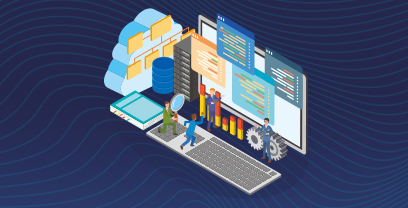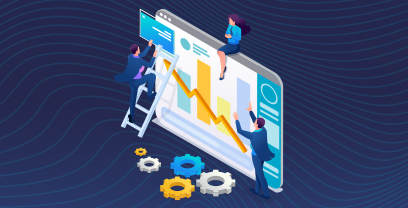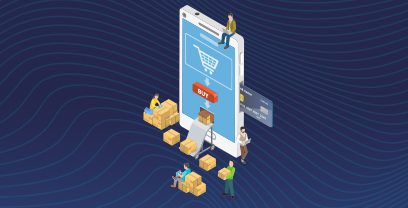The release of a new Gartner Magic Quadrant typically warrants reflection on the market. This is especially so when it involves a new category, as in the case of Gartner’s recent release: the 2024 Magic Quadrant for Source-to-Pay (S2P) Suites.
Historically, Gartner evaluated vendors in this sector on their solutions for specific processes (i.e., Contract Lifecycle Management) or portions of the Source-to-Pay process (i.e., Strategic Sourcing or Procure-to-Pay).
This new report reflects a profound shift in Gartner’s thinking, with vendors in the Source-to-Pay market being evaluated on their complete offering. A couple critical lessons should be noted from this new report.
Suites vs. Best-of-Breed – The Debate is Settled
The first notable lesson is the change in category itself. According to Gartner, the Source-to-Pay Magic Quadrant is not augmenting–but replacing the P2P category.
With Gartner having earlier discontinued the Strategic Sourcing Magic Quadrant, this change leaves the S2P Magic Quadrant as the only category focused exclusively on the Spend Management technology market.
This mirrors broader shifts in the market, where procurement leaders increasingly prefer platforms and view them as the right choice for their more strategic role. Survey after survey now supports that, such as the Oct 2023 one by Procurious which found that 48% of procurement leaders view the market shifting towards S2P suites/platforms (30% towards specialized S2P suites and 18% towards suites from ERP providers) versus only 25% towards best of breed.
As procurement’s remit has expanded from a focus on cost and efficiency to also prioritize sustainability, supply continuity and regulatory compliance, its technological needs have evolved.
Making rapid, informed decisions during dynamic market conditions requires quick access to information and optimizing among multiple priorities requires 360 degree visibility of suppliers. The easy access to more complete data promised by S2P platforms offers a tremendous advantage over point solutions that further silo organizational data.
While procurement’s remit has grown drastically, resources have remained relatively flat, actually declining slightly at most organizations in recent years. Doing more with less requires higher levels of automation. This is another advantage of S2P platforms, which can deliver seamless flows of information and activity across processes.
As Gartner stated in their 2023 Strategic Roadmap for Source-to-Pay Technology “[t]he goal of optimizing a single functional task, such as sourcing, was a reasonable goal when initially implemented, but more comprehensive process automation suffers from that strategy.”
The consistent user experience also drives higher adoption, further improving the level of process automation possible. Moreso, Generative AI is most easily accessed to drive even higher levels of automation when embedded in a S2P platform.
Lastly, procurement’s more strategic role and the shift in supplier relationships require greater collaboration. Collaboration rarely starts and stops in one step of the Source-to-Pay process, so collaboration capabilities are far more effective when embedded at the platform level rather than specific solutions.
That said, best- of- breed solutions remain an important part of the overall technology strategy for procurement. RBut rather than addressing specific S2P processes and competing with platforms as in the past, today’s best of breed solutions increasingly complement a central Source-to-Pay platform with niche information or capabilities.
For example, specialized provider Ecovadis provides ESG information that integrates into most platforms, where users can access all information on the supplier. Best- of-breed is still alive and kicking, but it means something different now.
Details Matter More than Ever
A common complaint from procurement leaders is that all technology providers seem the same. This is completely understandable given the broad usage of similar sounding terms such as integrated suites, and seemingly everyone claiming to have a Spend Management platform.
It’s also completely wrong. The wide disparity in positions of vendors in the 2024 Gartner Source-to-Pay Magic Quadrant, and the placement of only 2 as leaders, validates the actual level of disparity between vendor offerings.

That brings me to the second critical lesson. Details matter, and to properly assess technology you must look under the hood to see the often glaring differences. The distinctions are not just technical minutia – they often make the difference between one project succeeding and another failing. They determine whether the promised benefits of a S2P platform are real or just marketing.
A key area to investigate is data. Many platforms were assembled either via siloed development of individual solutions, or by integrating multiple acquired technologies. This means data remains siloed and has to be mapped to an analytics layer, a process that introduces errors and limits access to information. A unified data model maps all information to a single record in real time and makes all information available from wherever a user is, greatly speeding and improving decision-making.
Another important area to investigate is the platform’s extensibility. Most of today’s solutions are built on a multi-tenant architecture with limited configurability. That may not seem like an issue if the evaluated requirements are met, but new ones often arise during implementation or
or when business requirements evolve. Or when a clever employee develops an innovative idea (i.e., a new use case for Generative AI in Procurement). Or when regulatory requirements change.
Data requirements also continuously evolve (who would have guessed 5 years ago the level of carbon emission and other ESG data that many companies are now required to track?). Rigid solutions can hinder adoption and stifle business innovation, often forcing companies to switch solutions.
Platforms with true no-code / low-code configurability enable new processes to be digitized, distinct workflows to be easily created and Generative Artificial intelligence use cases extended in creative ways, future-proofing the strategic investment made when selecting a S2P platform. Gartner’s report noted that “[m]ature customers often select Ivalua as a replacement for a solution they were unable to configure to meet their business needs.”
Going back to the decades old best-of-breed versus S2P platform debate, the core argument for selecting niche solutions is that they used to offer better capabilities for specific processes than platforms did. That could offset the disadvantages of a core platform. With some platforms that is still the case, as the report calls out in various vendor cautions. But with leading platforms, that compromise is eliminated.
For example, Gartner states that “Ivalua has strong product capabilities across the source-to-pay spectrum for all types of spend. This is evidenced by its high scores for all critical capabilities and use-case ranking for S2C, P2P, and both direct and indirect S2P use cases.” Procurement leaders need not compromise between leading capabilities and the benefits of a unified Source-to-Pay platform.
A Brave New World
Today’s procurement teams look very different from those of years ago. Their organization, skill sets and priorities have evolved. As a result, their technological requirements are different as well.
Gartner’s transition to a single Magic Quadrant focused on the full S2P process is hence a timely evaluation of vendors. It reflects the advantages of a central, unified S2P platform to manage all spend and suppliers. Understanding that and knowing the right details to investigate will put procurement leaders on the path to a successful digital transformation.
Learn more about Ivalua’s unified Source-to-Pay Platform.
Watch a Live Demo of Ivalua’s Source-to-Pay Platform.




